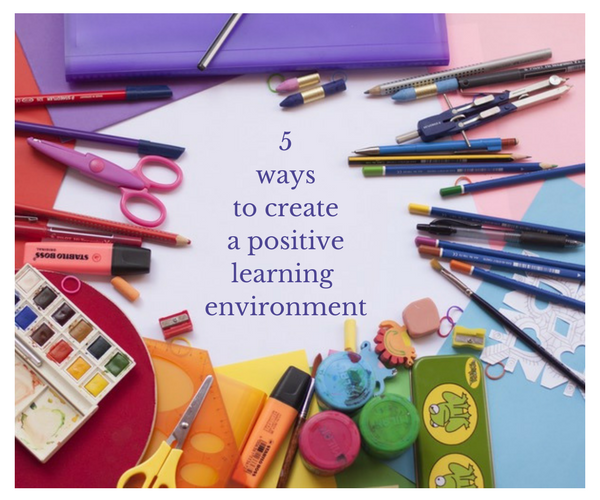As teachers, creating a positive learning environment that can be maintained can be a positive and supportive learning environment for all students as this could help them meet their full potential.
The various contexts, locations and cultures in which students learn is defined as the learning environment. Positive learning environments are characterized as supportive, caring, challenging and safe. Positive learning environments have been shown to produce better results academically and strengthen other life skills for learners.
As the educational leader in your classroom, you have the ability to create positive learning environments for your students.
Create a positive learning environment for your students using these five methods:
- Create a Sense of Belonging. Your classroom is a place where all students should feel as though they belong, so the environment should be welcoming and engaging. Take time to get to know your students. Create an atmosphere that is reflective of them, your collective goals and the content they are learning. Foster the sense of belonging.
- Build Relationships. Relationships influence everything within the learning environment. Studies have proven that strong, positive relationships lead to greater success for students.Try the following ideas to create connections and build rapport with your students:
- Call them by name.
- Learn about their personal interests.
- Offer office hours.
- Arrive early and/or stay late to chat
- Lecture less, interact more.
- Set Clear Expectations. Establish expectations for and with your students early on. By including your students in the process of setting expectations, it ensures that they are aware of what is expected of both you and them. Clearly define the course of action for when expectations are not met. Be consistent with the expectations and immediately address any instances in which they are not being upheld.
- Stay Relevant. Student engagement level is higher when material is relevant to their needs and goals. Adjust your teaching style to reflect the learning styles and individual interests of your students. Your students will have a higher retention rate of difficult information when it is presented in a way that is relevant and meaningful to them.
- Be Positive. Adopt the intentional habit of being positive within the classroom. Encourage smiling and expect the same of your students.
A great classroom environment is built on love, care, laughter and a feeling that everyone belongs.
Clear expectations, relevance and positivity are also components of positive learning environments. Your application of these concepts will be appreciated by your learners while shaping an environment conducive to their overall success.







